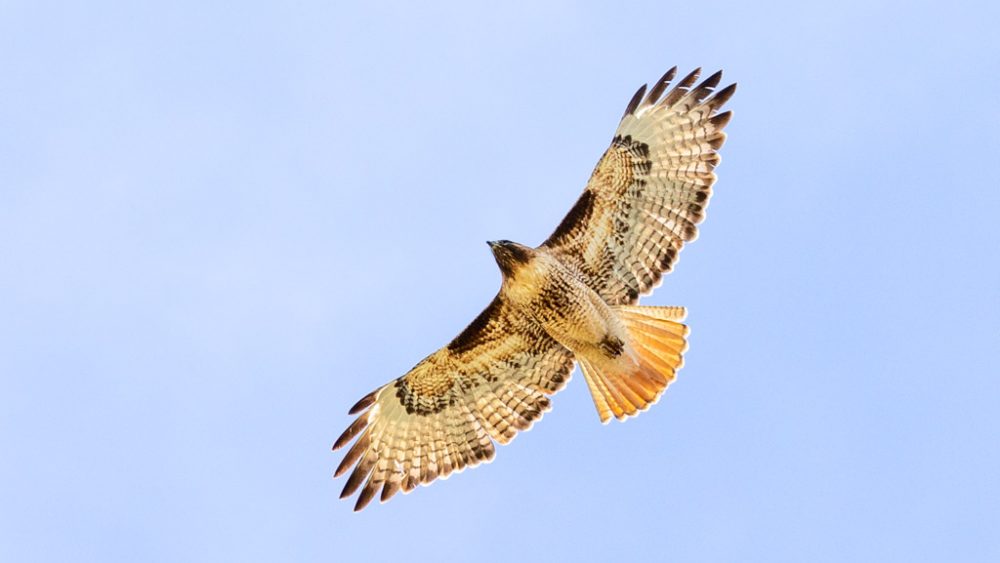 Humans have long been fascinated by birds of prey. Their graceful passage through the sky, hunting prowess, and impressive wingspans make them awe-inspiring to watch. Luckily for us, a great time and place and to see raptors on the wing is autumn in the Greater Yellowstone Ecosystem.
Humans have long been fascinated by birds of prey. Their graceful passage through the sky, hunting prowess, and impressive wingspans make them awe-inspiring to watch. Luckily for us, a great time and place and to see raptors on the wing is autumn in the Greater Yellowstone Ecosystem.
Increasingly colder temperatures and shorter days trigger the birds’ instinct to migrate from this area in late August or early September and continuing through early October. You’ll see both resident birds migrating as well as those passing through on their route between their nesting territories and their winter ranges in the southern US, Central America, or South America.
The north-south ridges of the Bridger and Gallatin mountain ranges are ideal places to witness the fall migration of hawks, eagles and other raptors, as are the wide-open valleys of Yellowstone National Park. The park’s Hayden Valley is a popular destination to view birds of prey, especially Swainson’s hawks.
We asked Brad Bulin, senior naturalist for the Yellowstone Forever Institute, for some tips on viewing the fall raptor migration in Yellowstone and the surrounding area. He said that knowing a little about how birds migrate will provide you with clues as to the best places and times to see them.
“Most raptors migrate during the daytime, when thermals—or columns of rising air—form as the sun warms the ground below,” says Bulin. The birds “ride” these thermals, he explains, enabling them to conserve a great deal of energy as they gain altitude without flapping their wings. Because air currents rising up the side of a mountain are particularly strong, large numbers of raptors roughly follow the north-south ridges of the Continental Divide as a migration corridor.
“Afternoons tend to be better than mornings, after the wind picks up. Right after a storm comes through is probably the best time. During a cold front, the winds blow counterclockwise,” he explains. “That north-to-south wind direction is exactly what the raptors need.”
 When in Yellowstone, he suggests positioning yourself anywhere with a wide-open view of the sky. “Hayden Valley, Dunraven Pass, Mount Washburn, and Swan Lake Flats are all located along migration routes and are good places to spot raptors,” says Bulin.
When in Yellowstone, he suggests positioning yourself anywhere with a wide-open view of the sky. “Hayden Valley, Dunraven Pass, Mount Washburn, and Swan Lake Flats are all located along migration routes and are good places to spot raptors,” says Bulin.
He advises using binoculars and constantly scanning the sky and ridgelines, as well as tall trees. “If the weather is not conducive to flying—if it’s raining or there’s very little wind—look up in the trees to spot raptors waiting to continue their long journey south.”
Photos, top to bottom: Red-tailed hawk, Mammoth Hot Springs – YF/Matt Ludin; Swainson’s hawk, Fishing Bridge area – Jim Futterer; Osprey, Yellowstone River – NPS/Neal Herbert; Golden eagle, northern range – YF/Matt Ludin.


Comments are closed.